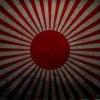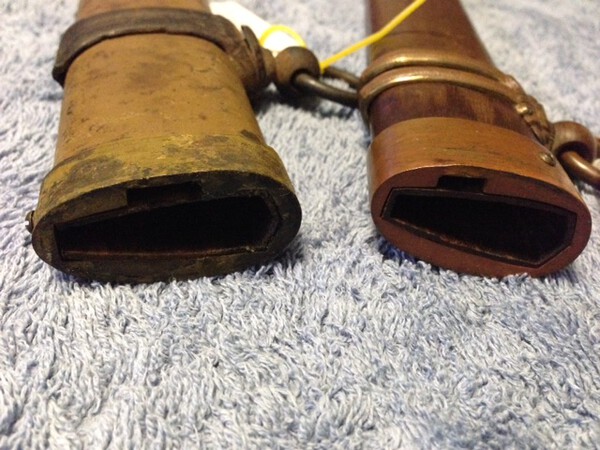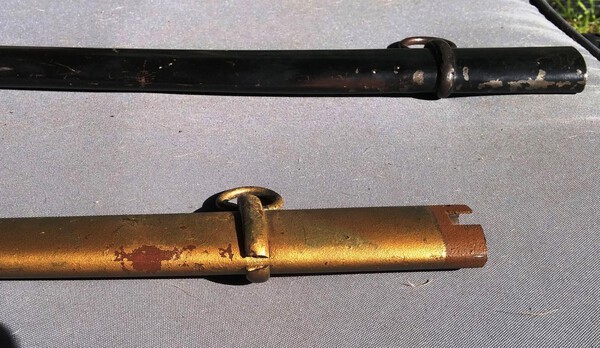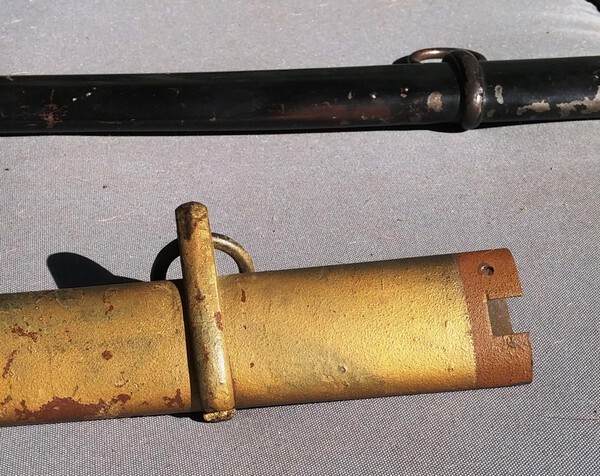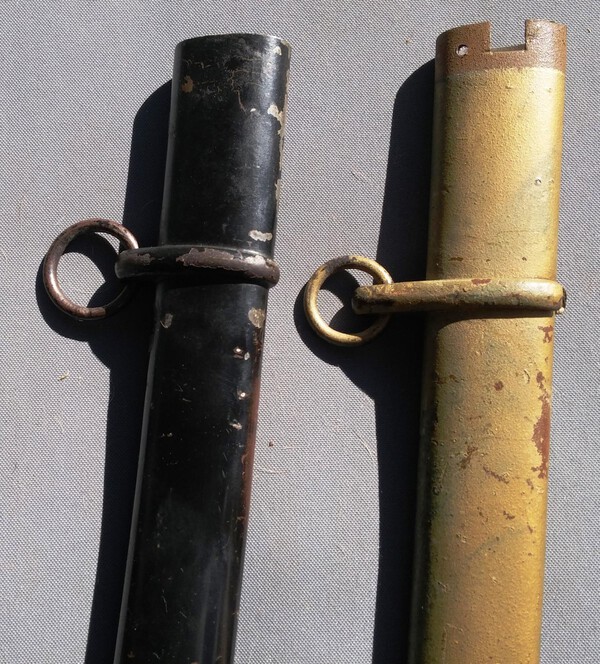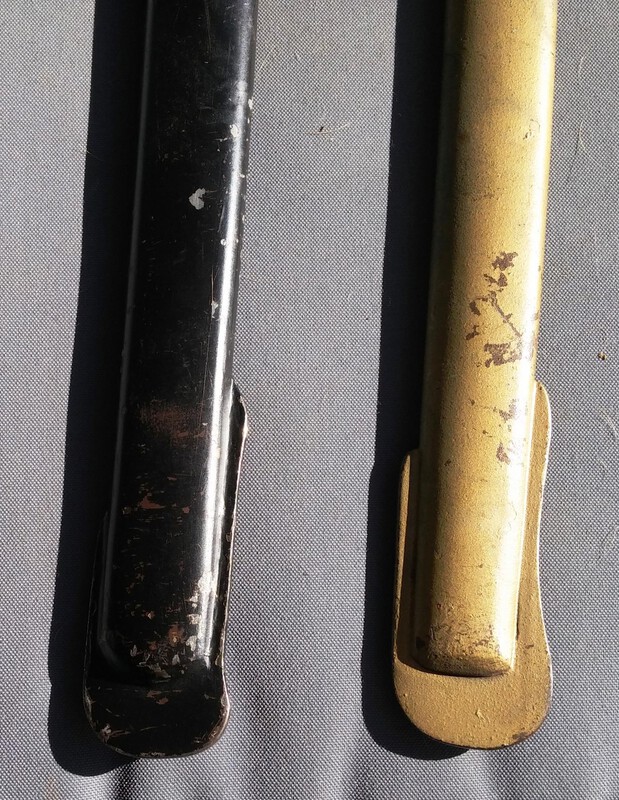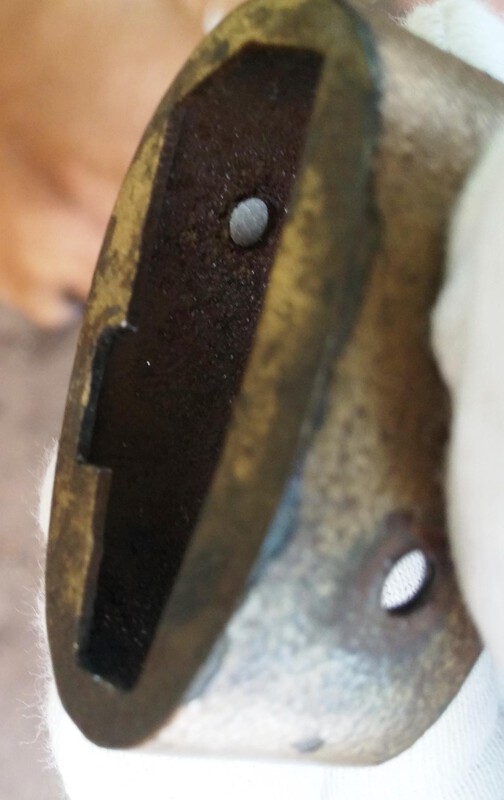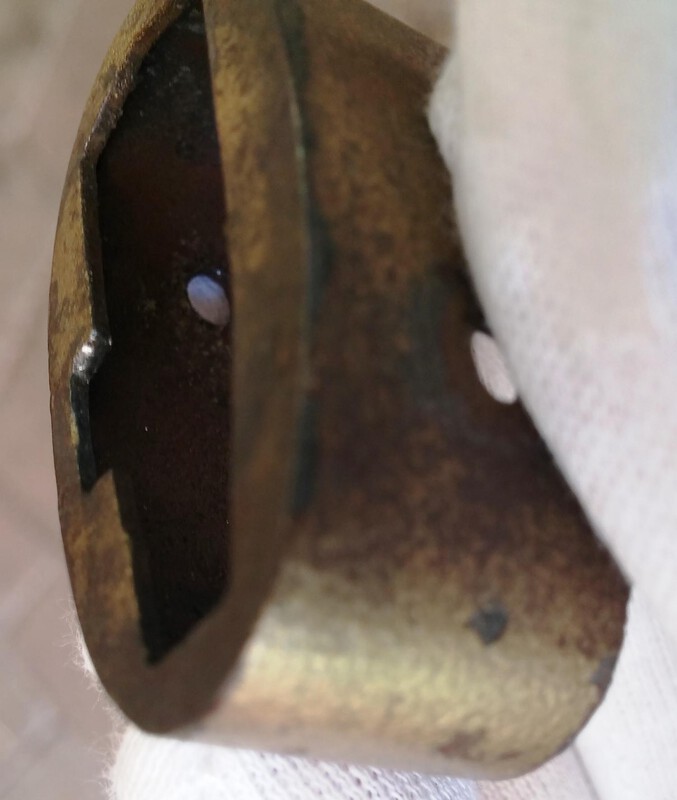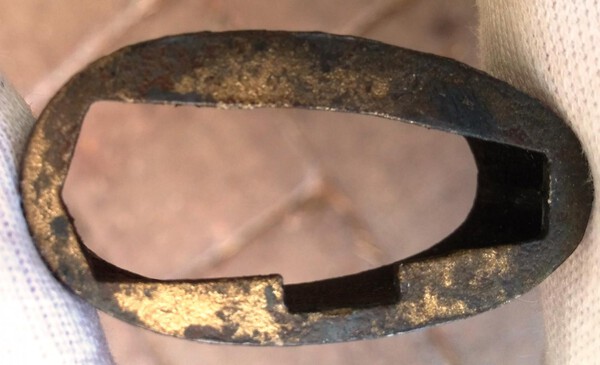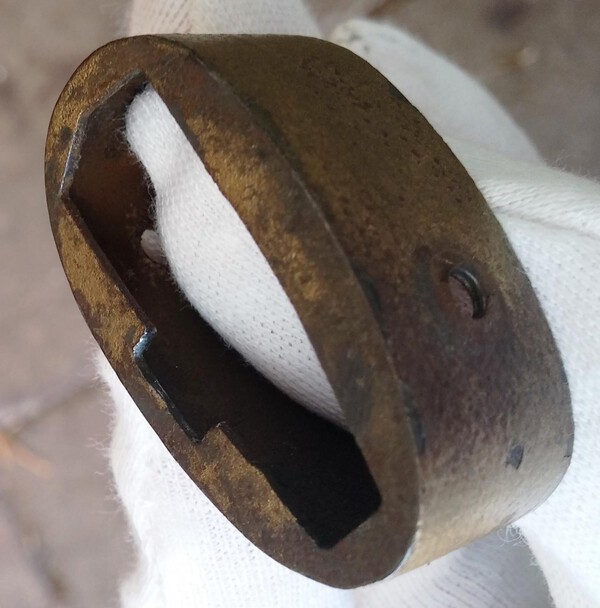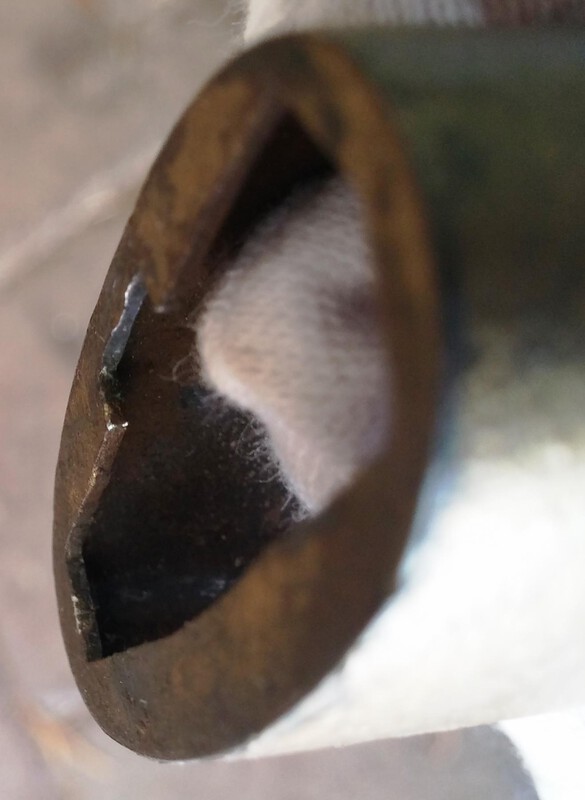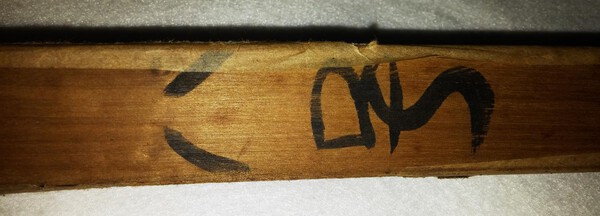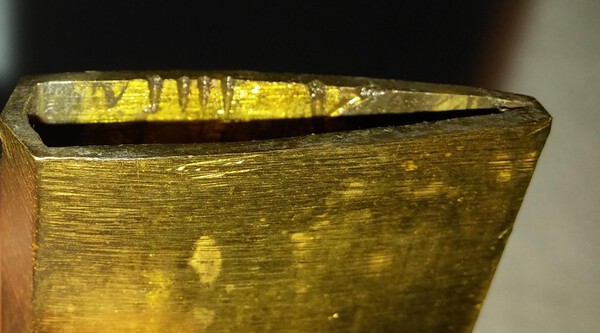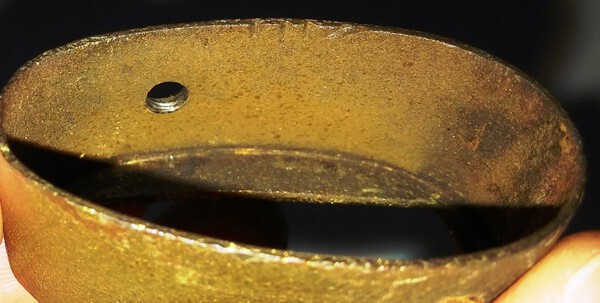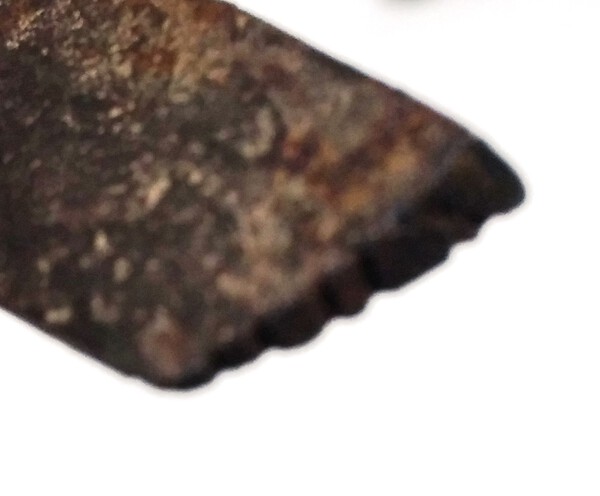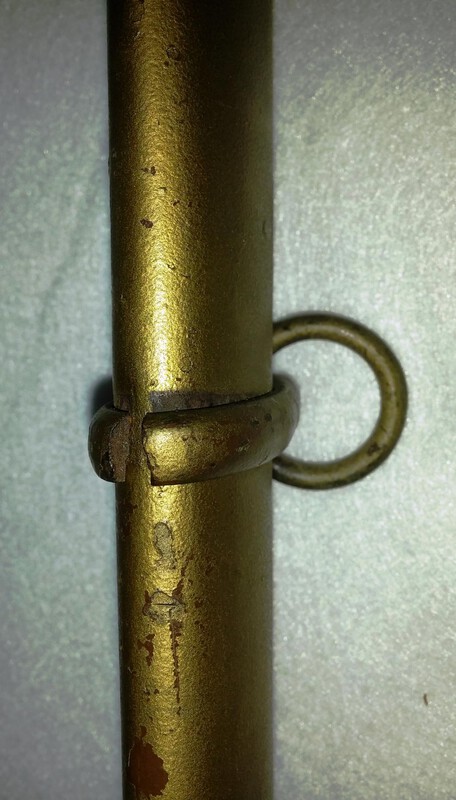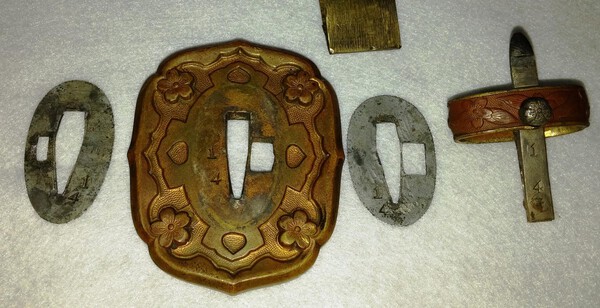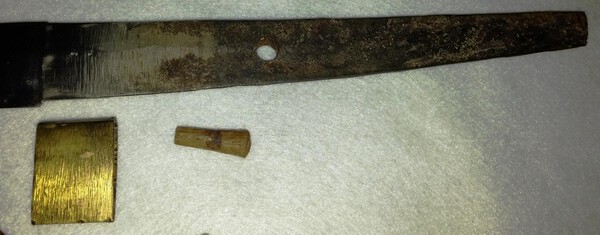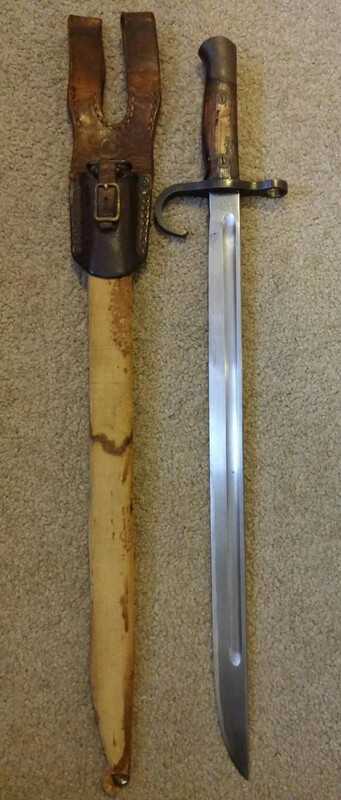-
Posts
1,402 -
Joined
-
Last visited
-
Days Won
12
Content Type
Profiles
Forums
Events
Store
Downloads
Gallery
Everything posted by Shamsy
-
Hi Bruce, good investigation! I'd already found the lightweight and dress gunto on my initial searches. I just named my thread parade as Dawson states the two terms are appropriate and interchangeable. I had initially thought it was somewhere in between the two swords, but while it look lighter and is a little more sleek than the typical gunto, it's hardly a lightweight! I would say the dress/parade gunto is closer. Now, one big problem with Dawson is that it's not really defined if these are distinct patterns nor whether there are multiple examples or just one. I've seen a couple of lightweight for sale and they matched the book exactly, but I've never seen a dress gunto. At least not one beyond the book. Is it unique? Are there variations? Do they all have a cast handle? Do they have have plated scabbards? I'm sadly ignorant to those questions. While my sword shares characteristics, it's different enough that it could be something else. Of course in saying that, were the 'dress gunto' unique then it's really a moot point as all 'dress gunto' would similarly be unique. The saya is an exact match bar the throat, which is a great start. It also has the extended hanger with the small ring. Nice pickup. Could be one of these dress gunto, which aligns fairly well with my own speculation that it is probably something made for a non combat role, where blades were scarce and looks were all that was necessary.
-
Emura is probably my favorite smith. I think that any gendaito collection should feature at least one of his swords, and the good news is that they're not rare or fetching unreasonable prices... yet. I wasn't aware of there being any prejudice again his work early on or that it wasn't ever considered nihonto. I've got some study to do. Shows how little I know about gendaito swordsmiths.
-
I'll have to disagree here. Serial numbers under 10,000 are scarce, not rare. I've seen several matched in the less than 10k range over just a few months. It's a shame that this one was a bit of a letdown Bruce, but hey, you win some, lose some. Like I said, they're only scarce so I'd not worry, you'll find another before long. If I don't get it first! Luckily I'm both poor and primarily interested in 95's. My otsu is a nice one but in the 122k so nothing scarce other than condition. My ko however is a totally original matched 1,000 (1,569 to be precise). Interesting to compare, as you can see how small details changed between early and later models. Up until about 8k the serial numbers were a smaller font and the throats a different design. Good luck mate, maybe I'll point a couple out like the side lock 95 when you're in the market
-
Here are a couple of pictures of pressed metal koiguchi on gunto, near identical to the one in question. I was afraid mine was filed, but was relieved to find the retaining clip just rubs slightly on one side. That is why there are only two tiny channels; one when the sword is sheathed without the button depressed and one when it is. So far I'm happy to conclude that there are two sets of matching fittings that are original. The tsuba, seppa, retaining pin all being stamped 14, that's a no brainer. Then the saya, saya koiguchi and habaki all have small IIIX marks. The blade has these marks at the terminus of the nakago to. Saya is original needing no evidence beyond that lining. I'm actually going to take a look at a couple more now because I'm really interested to see how those compare. My main doubt is the blade, but combine with the marks, a perfect fit to tsuka, perfect fit to saya, I'm pretty much over any doubt. With the fact that there were plenty of non-combat roles, officer blades were privately purchased and a severe shortages throughout the war I can't really see a lot of reason to doubt. The gold paint is not original but it's not recent. The fact that the brown underneath is in immaculate condition is great in my book, but I'll hold off on removal until more research is done. Thank you all for your contributions. If you agree great! If not don't ever feel like you can't disagree, but try to provide reason and evidence!
-
It says acetone formula for natural nails on the bottle. I think it's just a case of the gold paint also being lead based. A real pitty, it would have saved a lot of work.
-
Thank you for the advice Ed. It turns out that the gold paint must be lead based to. I rubbed the cotton ball for a good 10 minutes without any results to show. It looks like fingernails are the go for now.
-
Thank you Ed, but should the results be reasonably immediate? The nail polish remover (luckily had some) doesn't seem to be doing much....
-
And if you have a better option to remove the gold than a finger nail, my finger will forever be indebted.
-
Well all, I have quite an update... As I said I'm not going to defend the sword as original in the face of contrary evidence or tidy the facts for my own benefit. Learning is good. First of all, well done Ed! You were spot on mate. Goes to show that experience can easily pay off. The gold does appear to be paint added at a later stage. There was quite some discussion off board about this and some great examples of genuine proven undercoats came out for us to see. Now, I am not usually in favor of doing this, but I noticed a few things that I missed last night that made me feel okay with it... So I tried to scrape away some of the brown paint with my finger nail. Instead, the gold scraped away! Now, you may consider that a bit of a blow, but no! Under the gold there is nice, crisp ORIGINAL brown! Have a look at the photo I post with the saya mouth to. It clearly shows that the gold was sprayed on the assembled saya. Gonza alive and well Bruce. It might take a while, but I fully intend to remove all the gold and restore it to the original. Next test, compare the saya to an NCO. Well you can see the hanger and ring are not even close. All NCO with the metal saya have identical hangers without exception (well there is one but it's not worth mention). The hanger itself is considerably longer to, both in the solid part and the 'wrap around bands' (getting technical here). The drag was interesting to compare. On almost all the ones I looked at, the drag and saya tip would not match up. There was one similar shape, but again the saya tip didn't match. Now, I won't 100% rule out a machined NCO scabbard, but I was unable to perfectly match from a sample. More likely a Kyu Gunto, as the screw system is similar. Hamish had an excellent idea to check the koiguchi which I did. There was some wear where the clip makes retaining contact underneath (as expected and meaning nothing). There was also rubbing marks on one side of the notch where the spring clip would scrape every time the button is depressed. Could that be file marks? I don't know, but maybe. EDIT: Reassembled the sword. The edge of the retention clip does rub when the sword is sheathed, so that accounts for the bare metal. Also, that slot matches to the wooden insert so I'm quite certain it's not been jammed in there. The wooden insert smells musty. The Chinese can't do that. Bruce: I also found another those weird notches on the saya to, so go figure.
-
Good hint Hamish, I'll check that out tonight, see what's what. Ed - it's hard to see in the photo but the gold paint definitely looks like a middle layer! I'll see if I can get a shot to demonstrate this tonight and do the old look and feel test. Paul - You're comments are welcome and appreciated. This hobby requires skepticism and a critical mind. As the owner I of course want it to be real so I'm not as objective in my assessment. I will follow up on some of your points tonight to see what I can do to clarify or answer. Bruce - if you've seen this marking before then that's great to hear. It was too obvious on the habaki to miss and that made me take note of the other parts. More coming tonight, thank you for the great contributions!
-
Thanks David and Bruce for your thoughts and insights. Both good observations and it's quite possibly David is onto something with the reuse of old fittings. I'll answer some of the points Bruce raised for further discussion. The gold paint is actually the base paint. It is under the other paint, like a priming coat you could say. The picture of the hanging ring best shows this where you can see the metal under the ring, the gold matte layer then a little of the green paint layer. So I can definitely say that the thing was painted, but has now lost 95% that original paint. I also asked for assistance confirming the colour and it is indeed green. The flash on the camera makes it look odd. I'll clarify that again though just to be sure. The saya is completely different dimensions to the NCOs saya. I thought at first it may be retrofitting but no, longer, thinner and as you said Bruce, no screw hole and no evidence of throat adjustments. I thought it my have been from another sword, but the fit and then the marvelous lining convinced me it is original, as well as those weird little file patterns. I agree with the blade. I would have cried fake to based on the nakago and kissaki, but only had it been trying to be a combat gunto. See, the shape of parade saber kissaki is identical, so you can't call non - Japanese on that. The nakago.... well it is not great, but it is the right shape, has some file marks. Also, not certain I've seen many plated blades faked. Gunto and badly made 95 are the predominant swords from China. The fit is just too good to. Fittings are matching and beyond doubt. I'm not 100% convinced, but I'm comfortable to call it a non combat gunto.
-
-
So I took a little bit of a risk on this one and it's paid off. I really wasn't sure what it'd be exactly; if it was a parts mash, Chinese fake or a mix of both. Pleasantly, it turned out to be original once I had a look at it, but it doesn't comfortably fall under the 'Light Weight Gunto' category (feels pretty hefty to me) nor the parade sword, as it lacks... well the parade feel. Ultimately, what you're looking at is a 100% standard gunto... with a plated blade and acid etched hamon. Now, Take a good look through the photos. As you can see the tsuba, seppa and locking catch are all stamped '14'. Great! The tsuka is a little thinner than the standard gunto but otherwise in no way different. The mekugi is a little broader than usual to but again not unusual. The saya is not typical design and I wasn't sure what to make of this. The blade fitted perfectly, the locking latch is a match to, but I'm known to be a skeptic. The colour is actually original to. There are a few traces of the original olive green or whatever (I'm colour blind right) paint all over the thing. At some stage it would have been the standard green of the officers steel saya. Moving on, something I almost never do, I took the throat off to see what the liner looked like. Another pleasant surprise! While it is extremely dry and fragile and damaged in a few places, the liner is intact! Not only that but it has some sort of painted symbol (I don't read kanji so I won't make any assumption). It could say 'made in China', but given the age and condition, I think not. I thought (oh no!) that the liner was held together with masking tape, which doesn't bode well. Wrong. It is VERY thin and even more fragile rice paper that is... glued? on. Or maybe was applied wet and self adhered. I slightly cracked some when I touched it. Yes, I'll whip myself later. The other thing I noticed (and no, it's obvious in hand, if not the photos), the saya throat, the tip of the nakago and the habaki all have a series of 4 notches and an x. The blade is a pretty standard machine made one similar to those found on the parade sabers, but obviously slightly more in the style of a shingunto than a dress sword. Look at that kissaki! Yuck! But the same as a all the sabers which in my book is good. The nakago looks to have taken a bit of a knock, but could just be crude. Not seen one of these exact swords before but I am certain it is authentic. Current skills of patina forging is not that good. Plus Chinese don't know how to add that much dust and smell to the inside of a scabbard. If I had to guess (which I do have to!) I would say custom purchase, non-combat role. Looks the part but the cost would be considerably less. Maybe a doctor or something like that, but this is pure speculation. [Pretty please, if that painted thing on the liner looks like something Japanese (or Chinese even) that you recognise, post a comment below.]
-
Just like those new fangled mobile phones. I mean really, are you serious? Antiques go up in value. These are no different, though there is now a much greater appreciation and understanding of them, in no small way thanks to published resources. It's a no brainer. The older, more documented something is the more people will pay. There may be some small troughs but I suspect these swords will be a much better investment than shares and bonds.
-
Apologies Bruce, my oversight!
-
Here is the full article by Nick. Probably should have put it up first, but the other was easier to find. This has previously been posted on NMB but it seems to have been largely forgotten. For anyone interested in the 'Type 3' worth carefully reading. http://www.warrelics.eu/forum/Japanese-militaria/deflating-another-myth-type-3-army-officer-s-sword-expanded-version-584796/
-
Any of the variants may have seen active service, as while production ceased the sword was worn right until the end of the war. The blued ones are refurbished according to Dawson who thought that the 'white' (bare metal) were the original configuration. I'd say that's likely correct. You see the finger loops evident on white models and earlier pattern scabbard swords, but not on the later blued. The even later serial number ranges don't have the hole for the finger loop, and these tend to be blued and painted versions. There's really not been enough research on the subject for a definitive answer though and there are always exceptions that pop up to prove you wrong the moment you think you've got the answer. Being somewhat unpopular means we focus on the officer patterns and 95's. I did consider collecting 32s as my primary focus instead of 95's, but the 95 was my first Japanese sword, then I also found a couple of special 95's and that settled the argument. Still, I'd enjoy collecting then alongside, so maybe that's something to think about.
-
Hi Bruce, I was shown this thread because the comments on NCOs interested me, but you may find it answers questions regarding the so called 'Type 3'. http://wehrmacht-awards.com/forums/showthread.php?t=824972
-
The 32s are great swords. Not terribly traditional looking so they're rather unloved, but you could make a complete and meaningful collection with all the variants at a reasonable budget. Ideally you want low serial numbers as these are probably the swords that have seen the most active service. They made a ton of them. Always get matching numbers unless it's a re stamped scabbard.
-
Hi Bazza, These models are far too rare. The Chinese have never attempted to make a copy. Across the many thousands of NCOs made you'll find a whole variety of serial number stamps. Some are incredibly deep, others shallow. Some are wonky, some dead straight. Some evenly applied, some only half struck. Some overstrikes, some that appear to be struck with two different numbers. The standard NCOs have no real standards! It regularly makes people question good swords based on the misconception that any variation on the one or two they have held must mean a fake. Truth is there are barely any fakes that aren't glaringly obvious.
-
Well said Dave
-
Hi Chris, Nice to see my old wak found a good home. Someone has cleaned the blade though, so I hope they didn't totally obscure the hamon. It was a funny sword with the Seki stamp, because the traditional fittings had suggested to me I would have found an ancestral blade. It must have been made specifically for the officer. A surprising number of aussie on the board. Nice to see.
-
Hi Allen, How refreshing and pleasant to have a post where you have actually conducted some research on your own before starting a thread! Far too many "I bought this what is it" where not even the slightest effort would have answered half the post and lead to opportunities for further research and learning. I'll take a look through references and see if I can pin the stamp. I look forward to hearing what you've managed to deduct about your sword Update: My best bet is poorly struck Sho or Seki stamp. On page 197 of Modern Japanese Swordsmiths you can see two such examples which seem close enough to be within reason.
-
While that is certainly true Bruce, the numbers of mismatched put-togethers is also increasing, so watch that these are not mistaken for something new.
-
Hi Julien, Thank you for the picture of the bayonet! That's a really special piece and great to see the paint has that same off cream colour! Keep a hold of that one. Here is my Muckden bayonet in the white canvas covered scabbard. These are winter covers that LaBar states would have been used in places like the Aleutian Islands. Since this example and another I have seen are both Muckden arsenal made, it's reasonable to assume they were issues to troops in China during the harsh winters.


